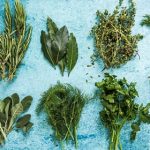by Chelsea Debret: The term ‘gut microbiome’, also known as ‘gut bacteria’, has become the norm in household conversations…

This transition from laboratories and doctors’ offices to our kitchen tables begs the question of where this sudden interest and popularity stems from?
In recent years, studies linking the health of the gut microbiome to the development and treatment of various conditions — from immune functions and gastrointestinal conditions to Autism and depression, and even the effectiveness of cancer therapies — has spurred a rising interest in how to keep your gut healthy.
Excluding those suffering from pre-existing conditions, for the majority of the population gut microbiome health relies on a healthy dose of activity and a nutrient-rich, plant-based diet. With that said, before venturing on any new diet or activity routine, make sure to consult a medical professional.
Microbiome 101: What, Why, and How
TeroVesalainen/Pixabay
Microbiome doesn’t solely exist in the gut but is found throughout the human body including in the skin, eyes, mouth, genitals, and intestines. For many years, the microbiome has been grossly misunderstood and this is mainly due to its complex nature. Yet, over the last decade, the microbiome has been slowly unraveled and the discoveries within its mysteries have changed the course of research and treatment.
What is Microbiome?
qimono/Pixabay
The simplest way to understand microbiome is to think of it as a “mini-ecosystem” within your body that is inhabited by various microscopic organisms. These microorganisms that make-up the microbiome include bacteria, pathogens — infections agents —, archaea —prokaryote microorganisms, which lack a nucleus —, and eukaryotic microbes — microorganisms that have a nucleus.
All of these elements combine to create a “symbiotic community” called the microbiome. Due to the potential volatile ecosystem, the microbiome has possible detrimental impacts on our everyday health, as well as our contraction and treatment of disease.
The Mysteries of Gut Microbiota
rawpixel/Pixabay
While the term ‘microbiome’ is a blanket statement referring to the entire body, the specific community within the gut is called gut microbiota or “gut flora”.
This community of gut microbiota lives within the digestive tract and it plays an incredibly important role in growth, nutrition, and the development of immunity. Researchers have also posited that an imbalance or change in the gut microbiota may be linked to epidemics such as asthma, obesity, fatty liver disease (non-alcoholic), irritable bowel syndrome, and even celiac disease.
These gut microbiota health-related conditions arise due to the interaction between this delicate mini-ecosystem of microorganisms and pathogens that coexist within that ecosystem. While pathogens are infectious agents, they usually play nice within the microbiome and remain dormant. What tips the scale of friendly and infectious pathogens is the health of your microbiome.
In short, “the makeup and overall health of your microbiome as a whole determines whether pathogens in the gut coexist peacefully, or cause disease.”
Gut Health at the Kitchen Table
JamesDeMers/Pixabay
So, how do you keep your microbiome happy, healthy, and comingling in comradery?
It’s complicated.
Even though research has advanced the knowledge surrounding microbiome, it is still in the early stages. With that said, there are two things that have been found to affect your gut microbiota: diet and exercise.
Gut Bacteria and Fiber
GerDukes/Pixabay
Prominent microbiome researchers and founders of the American Gut Project at the University of California, San Diego, Dr. Rob Knight and Jeff Leach, are still in the throes of learning about the relationship between gut health and diet, yet one thing they have determined is that fiber may be a key ingredient.
Fiber is an essential part of any healthy diet. It helps to move food and food waste through the body, it is a key agent in preventing diabetes and digestive issues, and it is a great way to reach and maintain a healthy weight. Yet, fiber has an even more important and less recognized role: it feeds the body’s gut bacteria.
In an interview with NPR.org, Knight and Leach explain that if we fail to ingest the appropriate amount of fiber, our gut bacteria starve and when this happens these bacteria turn their attention to the next best source of sustenance: the gut itself. Per Leach, our gut bacteria will “eat the mucus lining – the mucin in our large intestine,” in order to survive.
On the other hand, well-fed gut bacteria nourish the cells that line our guts, leading Leach and Knight to surmise that fiber intake equals better gut health.
Gut Bacteria and Exercise
StockSnap/Pixabay
While fiber plays an important role in sustaining healthy gut bacteria, endurance exercise has the potential to actually change your gut bacteria.
Studies in humans have shown that endurance exercise, such as brisk walking, running, jogging, swimming, and biking, “increases the production of short-chain fatty acids (SCFAs).” Short-chain fatty acids are created by your gut bacteria as the fiber is fermented in the colon. These important fatty acids have been found to reduce the risk of inflammatory diseases, obesity, heart disease, and type 2 diabetes, to name just a few. Along with stimulating the creation of SCFAs, one study discovered a reduction in inflammation, as well as an increase in molecules that promote fast recovery.
Even though these findings are new, the potential linkage between exercise and healthy gut microbiome is undeniable.
Plant-Based Fiber-Rich Recipes to Feed Your Gut
jill111/Pixabay
One of the great benefits of a plant-based diet is the plethora of fiber-rich, plant-based recipe options. Along with high-fiber content, fruits and vegetables provide an easy source for well-rounded nutrient-rich meals, which many Americans are unfortunately lacking.
To begin your journey towards better gut health, take note of fruits and vegetables that have a high fiber content, preferably working towards a daily recommended goal of either 25 grams for women and 38 grams for men. This is an easy task given that over 20 of the most popular plant-based food items have a high fiber content or offer a great source of fiber.
Once your list is created, it’s time to get cooking! We found some recipes from the Food Monster App to help you get started.
Creamy Sweet Potato Noodles With Ginger Tempeh
Sweet potatoes are a great source of fiber. One cup of peeled, cooked sweet potato offers 6.6 grams of dietary fiber. This Creamy Sweet Potato Noodles With Ginger Tempeh recipe by Jess Hoffman is a wonderful comfort food recipe with a twist. Along with the fiber-rich sweet potato, this recipe also includes kale, which has 2.6 grams of dietary fiber per cooked cup, along with many other essential nutrients including vitamins A, C, E, and K, as well as folate, potassium, sodium, magnesium, and phosphorous.
Chickpea Jalapeno Salad
The chickpea is an essential part of a plant-based diet. In its raw form, one cup of this legume offers 34.8 grams of dietary fiber, as well as large quantities of important nutrients including omega-3 and omega-6 fatty acids, vitamins A, C, E, K, B6, and B12, as well as folate, calcium, iron, phosphorous, and potassium, to name just a few. This Chickpea Jalapeno Salad by Celeste Meredith takes the traditional salad and gives it a kick of spice and heat.
Roasted Brussels Sprouts With Apples and Chestnuts
This Roasted Brussels Sprouts With Apples and Chestnuts recipe by Michaell Johnson packs a fiber punch. One cup of cooked brussels sprouts offers .5 grams of dietary fiber, yet combined with apples (4.1 grams per cooked cup) and cranberries (5.1 grams per raw cup), this filling dish provides almost half of the daily recommended fiber for women and a third for men.
Foolproof Mega Lentil Burger
If you’re looking for a go-to fiber source, the lentil is king. One cup of cooked lentils offers a whopping 15.6 grams of dietary fiber. Lentils alone will get you over halfway to your daily recommended fiber intake and paring this diverse legume with other fiber-rich foods — such as spinach, pinto beans, or broccoli — is a great way to get the most fiber bang for your buck. This Foolproof Mega Lentil Burger by Renee Press is a great example of how to diversify your lentil creations.
If you’re looking to redesign your pantry to meet a fiber-rich, gut healthy diet, we highly recommend downloading the Food Monster App, which is available for both Android and iPhone, and can also be found on Instagram and Facebook. The app has more than 10,000 plant-based, allergy-friendly recipes, and subscribers gain access to new recipes every day. Check it out!





















































